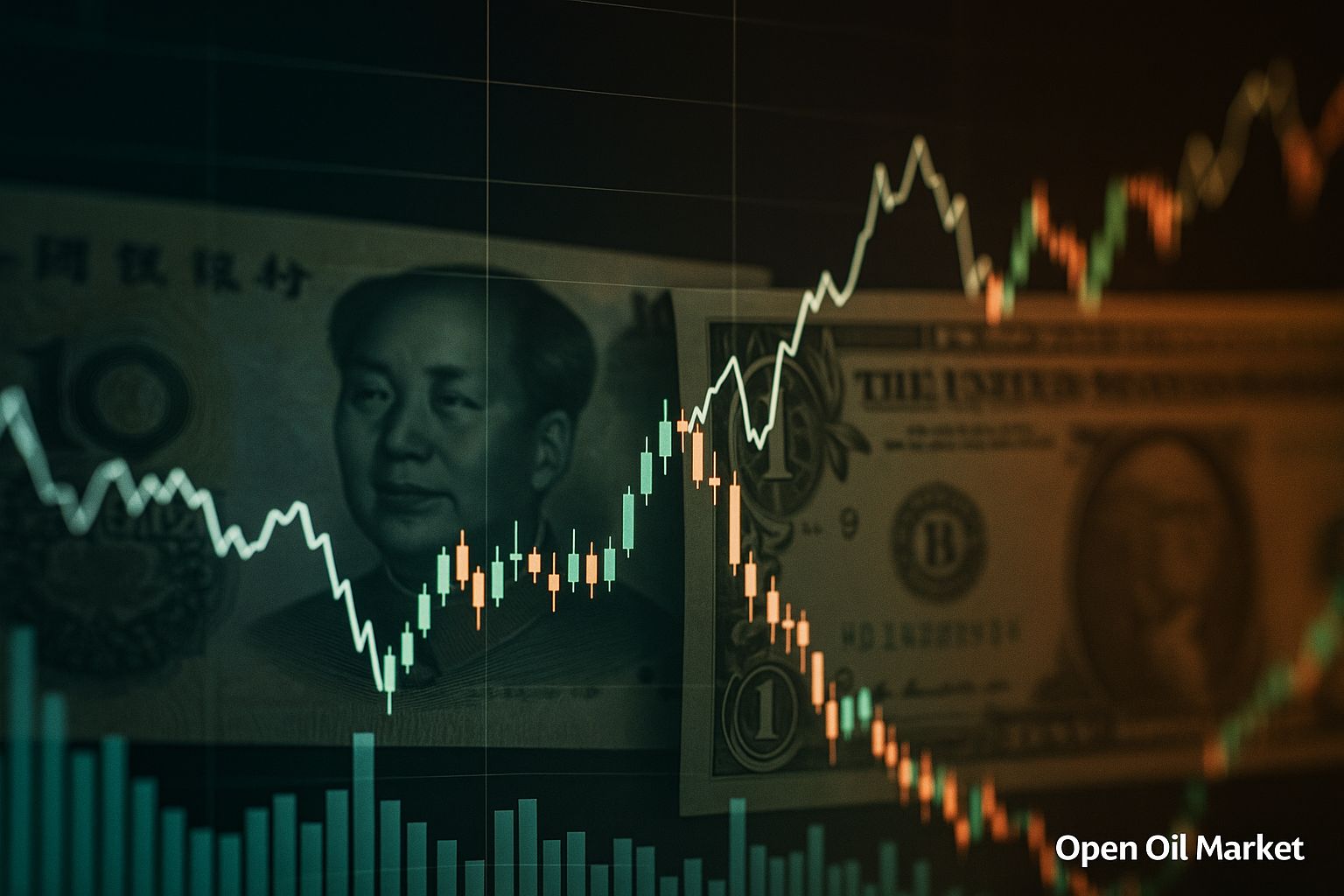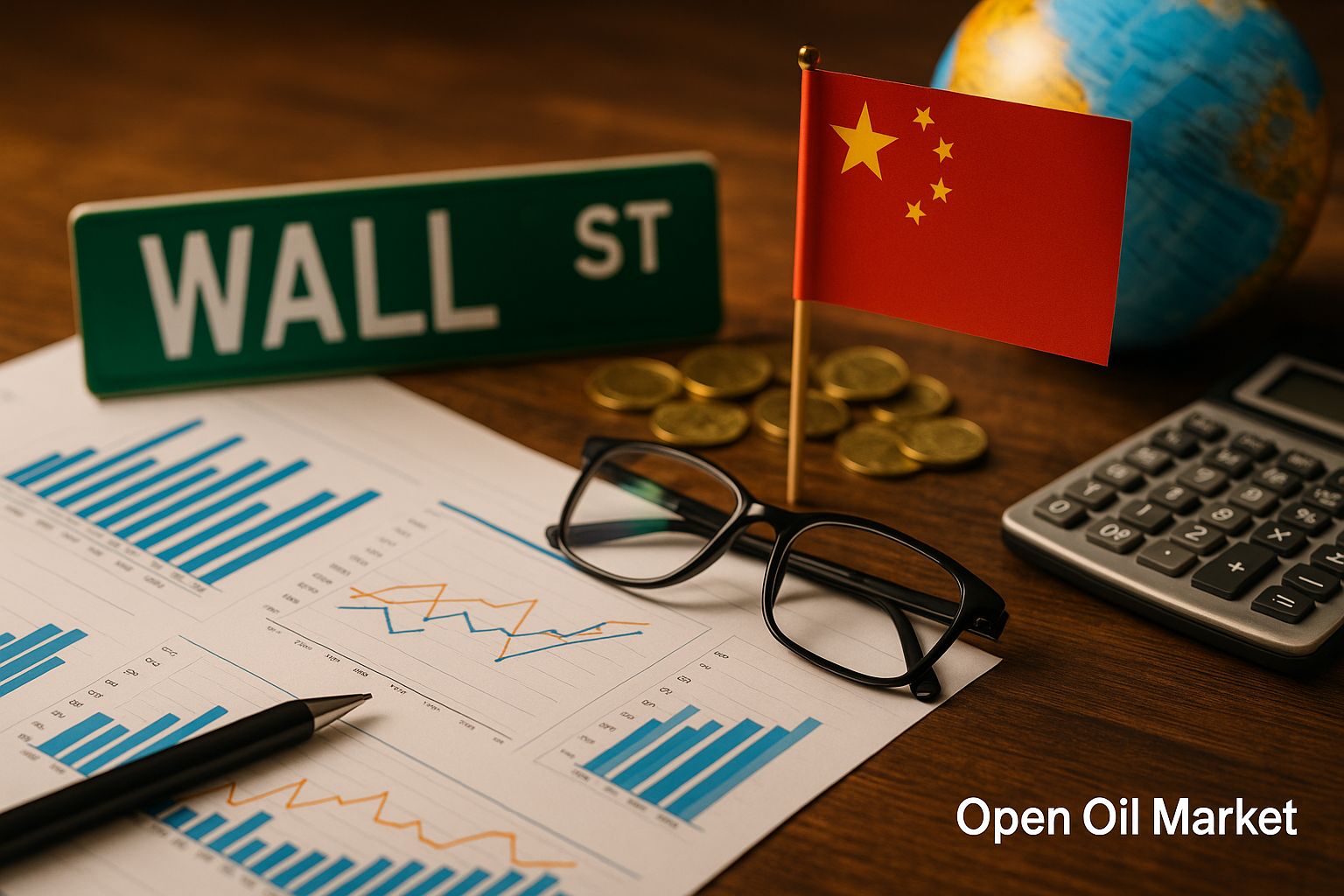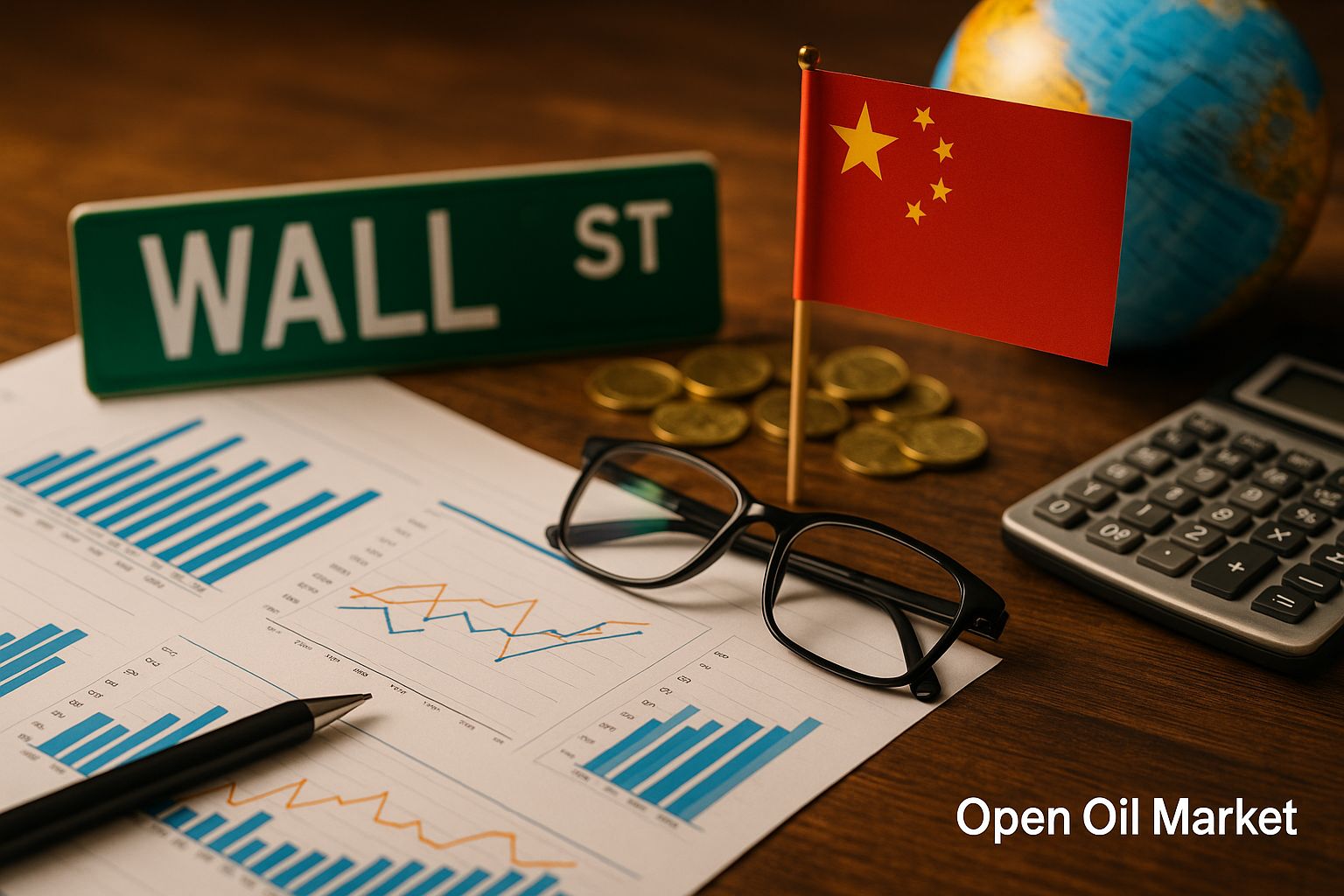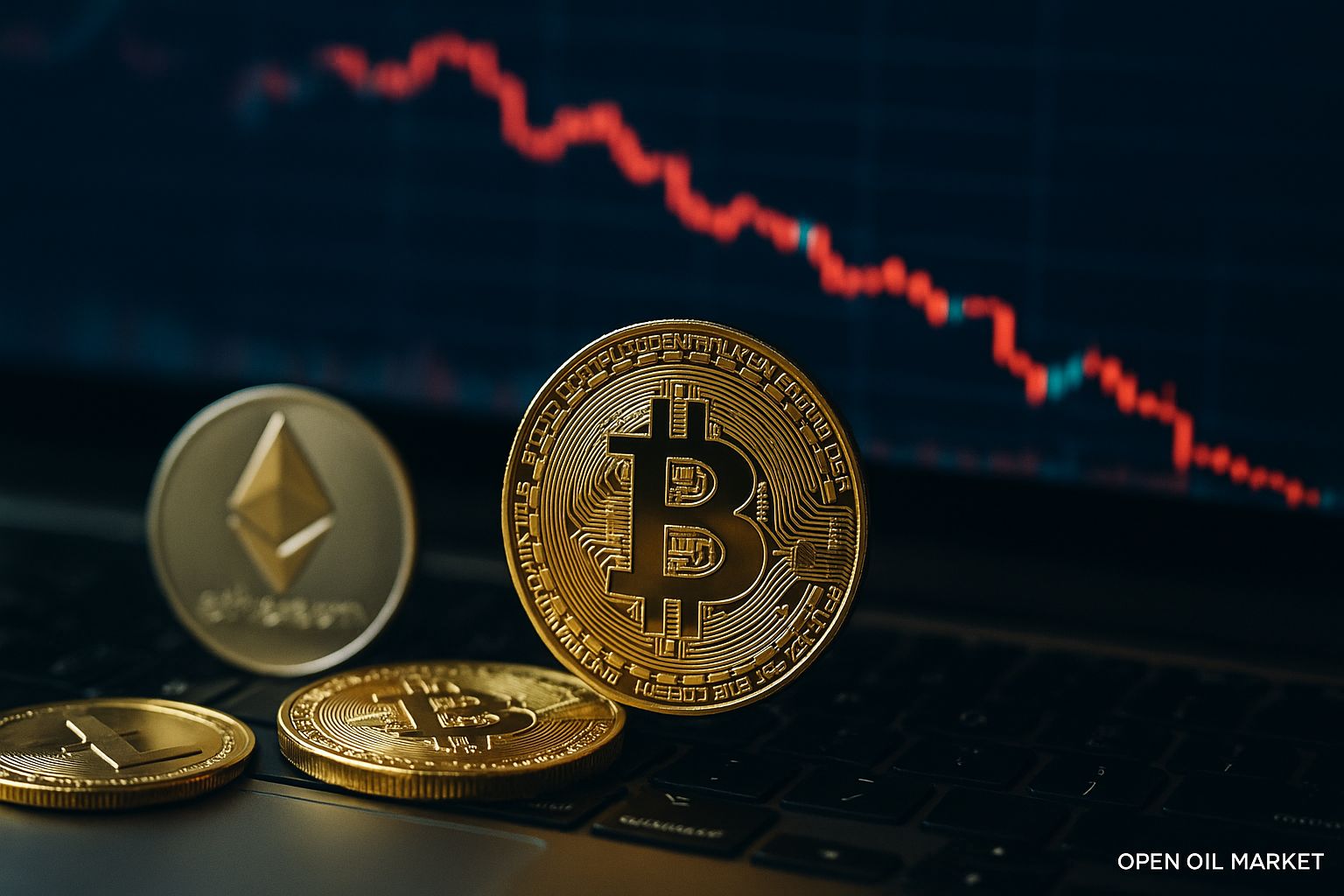
Detailed Review of Economic Events and Corporate Reports on 18 October 2025: Outcomes of the G20 Meeting, Expectations for China’s GDP Data, Commodity Markets Situation, as well as Reports from Companies in the USA, Europe, Asia, and Russia
Saturday presents a relatively calm agenda for the markets: no official macroeconomic publications are scheduled for 18 October, and thus global factors move to the forefront of investors’ attention. At a global level, discussions are focused on the outcomes of the G20 finance ministers’ meeting and the outlook for the global economy; meanwhile, attention in Asia shifts to the upcoming GDP data from China for the third quarter. The energy sector is closely monitoring oil price dynamics, which have dipped to lows amid expectations of oversupply, while the gas market remains stable ahead of the winter season. On the corporate front, the quarterly earnings season is ongoing; in the USA, following the bank publications, the focus shifts to technology giants, while in Europe, the first releases (luxury and technology sectors) have set the tone, and Asia has received positive results from a major chipmaker. It is vital for investors to assess global trends holistically: economic growth rates ↔ central bank policies ↔ corporate profits ↔ commodity prices ↔ overall market risk appetite.Macroeconomic Calendar (MSK)
- Holiday — no key macroeconomic indicators are scheduled for release.
Global Economy: Outcomes of the G20 Meeting
- Resilience and Risks: At the recently concluded G20 meeting, general resilience in the global economy during the first half of 2025 was noted, although a range of persisting risks were emphasised. Key threats include geopolitical tensions, vulnerabilities in supply chains, high debt levels in several countries, and climate factors. Despite these challenges, financial leaders expressed confidence in the global economy’s ability to avoid recession with appropriate policies.
- Macroeconomic Policy and Debt: G20 participants agreed on the importance of supportive macroeconomic policies for maintaining long-term growth. There was a specific emphasis on the need to address high public debt: governments must seek a balance between fiscal sustainability and stimulus. Transparency of debt obligations and enhancing cooperation with international financial organisations (IMF, World Bank) are considered priorities to reduce crisis risks in developing markets.
- Reforms of Development Institutions: The concluding summary of the meeting highlighted support for reforms of multilateral development banks aimed at increasing their lending capabilities. It was proposed to actively engage developing economies in decision-making to broaden access to infrastructure financing and sustainable projects. The G20 aims to ensure that international financial institutions respond more effectively to global challenges and provide resources to emerging market countries.
China: Economic Growth Under Close Watch
- Expected Slowdown: At the beginning of next week (20 October), China will publish GDP data for the third quarter of 2025. Analysts are forecasting growth of around 4.5–5.0% year-on-year, which is somewhat below the previous quarter’s figure (5.2%). The potential slowdown is attributed both to the high base effect from last year and ongoing difficulties in certain sectors, primarily real estate and exports.
- Balance of Factors: Domestic consumption in China remains the main driver of growth, bolstered by stimulus measures and improvements in the labour market. However, investment activity is declining: the construction sector is experiencing a downturn, and private companies are cautious amid regulatory measures. External demand is also weakened by economic slowdowns in Europe. At the same time, the high-tech sector (for instance, chip and electronics manufacturing) is showing robust growth, driven by government programmes and global demand for AI products.
- Market Impact: The Chinese GDP data will serve as an indicator for global commodity and equity markets. Stronger-than-expected growth could support prices for industrial metals, oil, and assets in emerging markets, signalling robust demand. Conversely, if the statistics disappoint, discussions about additional stimulus from the People's Bank of China and the Chinese government could intensify — this may temporarily increase the volatility of the yuan, mining companies, and commodity currencies (AUD, NZD), but also foster hopes for further stimulus, easing negativity.
Energy Markets: Oil at Lows, Gas Stable
- Oil — Risk of Oversupply: Brent crude prices are hovering near multi-month lows (around $60–65 per barrel) amid expectations of oversupply by year-end. The OPEC+ alliance confirmed a planned slight increase in production from November (~+130,000 bpd) during its early October meeting, returning previously restricted volumes to the market. However, global demand is growing slower than anticipated: the International Energy Agency (IEA) revised its estimate for 2025 demand growth downwards (~0.7 million bpd versus earlier expectations of ~0.74 million). Meanwhile, production outside OPEC (such as in the USA, Brazil, and Guyana) is increasing at a faster pace. As a result, several analysts warn of a potential return to oil oversupply in the fourth quarter, which is putting pressure on prices.
- Gas — Comfortable Inventories: The situation in the gas market is favourable for consumers. The European Union enters winter with record inventory levels: underground gas storage is over 95% full on average across the EU. Thanks to mild autumn weather and stable LNG supplies, wholesale gas prices in Europe are maintained at low levels (benchmark TTF futures around €30 per MWh, significantly lower than peaks in autumn 2022). The high level of inventories sharply reduces the likelihood of a repeat of last year’s price shock, even in the case of a cold snap. For Russia, the redistribution of gas exports eastward (increased supplies to China via the 'Power of Siberia', expansion of LNG exports) partially offsets the shortfall in sales to Europe, although overall exports are still lagging behind pre-sanction levels. Stable gas prices imply a relaxation of inflationary pressure on the European economy, providing breathing room for industrial consumers ahead of the winter season.
- Geopolitics and Sanctions: There remain risks of unexpected shocks in the energy market. Sanction pressure on the Russian oil and gas sector continues to grow: Western countries are discussing new restrictions (for instance, an embargo on Russian LNG purchases by 2026), which may change the configuration of global supplies in the future. Meanwhile, shadow redistributions of flows (discounted oil sales to India, China, and the Middle East) allow Russia to maintain much of its export volumes, albeit at the cost of discounts. Geopolitical factors continue to guard the market: any escalation in the Middle East or new incidents around energy infrastructure (such as drone attacks) could swiftly bring a 'risk premium' back into oil prices, despite the current bearish sentiment.
Other Regions and Indices: S&P 500, Euro Stoxx 50, Nikkei 225, MOEX
- S&P 500 (USA): The earnings season in the USA is gaining momentum. The first wave of results from major banks showed a mixed picture: record profits from interest income amid high rates (with some banks, such as **JPMorgan**, outperforming expectations), but weakness in investment banking. A positive highlight was **Morgan Stanley**, which surprised with a revenue increase and strong wealth management results, supporting shares in the financial sector. Upcoming are reports from technology leaders: next week, investors await results from **Netflix**, **Tesla**, and other 'big tech' companies, which are likely to set the tone for the entire market. High expectations for the AI sector have already yielded excellent reports from chip manufacturer **TSMC** (profit growth and increased forecasts amid a surge in demand for AI equipment). The focus now shifts to the forecasts of American IT giants: maintaining revenue and margin growth could divert the market's attention from macroeconomic risks.
- Euro Stoxx 50 (Europe): European blue chips are just entering the active phase of the third-quarter earnings season. Several early releases have instilled optimism: the French conglomerate **LVMH** reported a rebound in sales growth (+1% organic in Q3 due to revived demand in China), triggering a rally in luxury sector shares. Dutch chip lithography manufacturer **ASML** also reported better-than-expected results and maintained a positive outlook based on continued demand as a result of the 'chip boom' for AI. Nevertheless, the overall economic conditions in Europe remain challenging: high rates and inflation are pressuring the construction and retail sectors, so market participants are closely awaiting upcoming reports from banks (such as **Deutsche Bank**, **Santander**) and automobile manufacturers at the end of October. Their results and comments on demand will show whether the eurozone economy can weather a prolonged period of expensive money.
- Nikkei 225 (Japan): In Japan, the corporate earnings season for the first half of the 2025 financial year (April-September) is continuing. A series of releases from industrial giants and consumer companies is expected. The weakness of the yen against the dollar (USD/JPY is approaching 150) may bolster export-oriented sectors, enhancing the competitiveness of Japanese goods abroad and also yielding currency revenue. Investors will be monitoring the results of automobile manufacturers (such as **Toyota**, **Honda**) and electronics companies for insights on profit growth from exports. Domestic demand in Japan is showing moderate recovery due to rising wages and government incentives, which may reflect in retailer reports. Overall, corporate profits in Japan are projected to have grown by single digits on average, confirming the gradual exit of the economy from a deflationary scenario.
- MOEX (Russia): In the Russian market, the period for publishing operational results for the summer months is concluding. Transportation and energy sector companies have disclosed their data for the third quarter: for example, the airline holding **Aeroflot** reported a decline in passenger traffic over the summer amid high base effects from the previous year, while several oil and gas companies reported stable production despite export restrictions. In retail, differentiation is apparent: food retail chains continue to increase revenue at double-digit rates, while non-food retailers are experiencing cooling consumer demand. The main wave of financial reports for the first nine months is expected closer to November, and investors are already factoring in potential dividend surprises. The external backdrop (fluctuating oil prices, ruble exchange rate around 80-85 per dollar) remains a crucial factor for the Russian equity market. The MOEX index is being held in a range as inflows of domestic liquidity and strong results from certain exporters offset the risk premium associated with geopolitics.
Summary of the Day: Key Takeaways for Investors
- Global Signals: The G20 summary highlighted both the resilience of the global economy and the existence of risks (debt, conflicts). For investors, this means that the macro environment remains uncertain. Attention should be paid to central banks' rhetoric: any hints at tightening policies or, conversely, readiness to support the economy can significantly shift market sentiment, especially considering the high level of global debt.
- Data from China: Upcoming statistics on China’s GDP could become the main driver at the beginning of the new week. If growth slows more than expected, a brief drop in prices for oil, metals, and emerging market currencies may occur. Conversely, strong data would support shares of commodity companies and Asian markets. Investors focused on EM assets should prepare for increased volatility around the release of these figures and consider hedging risks (e.g., through futures or options strategies).
- Oil Prices: The decline in oil prices to annual lows is a factor that can both help and hinder portfolios. For oil importers (airlines, chemicals, transport), this is positive due to reduced costs. However, for the energy sector and commodity currencies (ruble, Canadian dollar, Norwegian krone), cheap oil is burdensome. Investors are recommended to assess the share of energy assets in their portfolios: it may be prudent to temporarily reduce exposure to oil and gas or shift towards companies with more predictable margins. It is also vital to monitor OPEC+ statements — if prices fall too steeply, the alliance may hint at a production plan correction, which could instantly reverse the market.
- Corporate Reports: The earnings season has the potential to shift the market’s focus from macroeconomics to corporate stories. In the upcoming sessions, the results of American IT giants will take the spotlight — their forecasts concerning demand, profits, and margins will set the tone for the technology sector globally. For European investors, it is important to assess the reports from banks and industrial flags regarding income resilience in a stagnating eurozone economy. In Russia, attention to exporters’ dividend plans for the first nine months is critical: any positive surprises could attract additional capital inflows into the local market. Overall, this is a good time to reassess individual stocks in the portfolio: whether to hold shares whose fundamentals are starting to decline, or better reallocate funds into sectors benefiting from current trends (for example, into growth favourites driven by AI demand, or conversely, into defensive sectors with high yields).
Markets on 18 October 2025: Cryptocurrencies, Commodities, and Currencies
Cryptocurrencies: Bitcoin (BTC/USD) is consolidating around $120,500, gaining +1.2% over the last 24 hours. The benchmark cryptocurrency is holding near historically high levels, showing relative stability amid declining volatility. Ethereum (ETH/USD) is trading near $7,500, virtually unchanged over the day. The total market capitalisation of cryptocurrency assets stands at $3.3 trillion, with sentiment indicators pointing to moderate optimism among investors in digital assets.
Stock Indices and Futures:
- Shanghai Composite: 3,610.45 (−0.42%)
- Hang Seng Futures: 24,730.0 (−0.68%)
- Nikkei 225 Futures: 43,800.0 (+0.20%)
- Euro Stoxx 50 Futures: 5,480.0 (+0.35%)
- S&P 500 Futures: 6,512.50 (+0.15%)
Commodity Prices:
- Brent Oil: $63.10/barrel (+0.10%)
- Natural Gas (Henry Hub): $3.105/MMBtu (−0.05%)
- Gold: $3,350.50/ounce (−0.40%)
- Silver: $37.50/ounce (−1.12%)
- Copper: $4.500/pound (+0.20%)
- Nickel: $1,280.0/ton (−0.50%)
- Aluminium: $2,600.0/ton (+0.30%)
Forex Market:
- EUR/USD: 1.1650 (+0.02%)
- GBP/USD: 1.3455 (+0.17%)
- USD/JPY: 150.10 (+0.08%)
- USD/CAD: 1.3760 (−0.05%)
- USD/CHF: 0.8180 (+0.10%)
- AUD/USD: 0.6430 (−0.05%)
- NZD/USD: 0.5925 (−0.20%)
- EUR/GBP: 0.8660 (−0.15%)
- GBP/JPY: 202.20 (+0.10%)
CNY and RUB Exchange Rates: USD/CNY — 7.250; USD/RUB — 82.50. The dollar/ruble pair has slightly strengthened compared to the levels at the beginning of the month, reflecting a drop in oil prices and demand for riskier assets. However, the rouble remains significantly stronger than peak summer levels, helped by high domestic interest rates and exporters’ currency revenue sales.
Analysis: Global markets display mixed dynamics over the weekend: American and European futures are moderately positive, supported by optimism regarding corporate results, while Asian indices are partially negative amid concerns over the growth rates in China. Oil prices remain under pressure due to prospects of oversupply, hindering commodity sectors and exporters’ currencies. Gold, which reached new highs in the previous weeks, has retreated below $3,400 per ounce amid persistently high real bond yields — investors are taking profits in safe-haven assets. The currency market is relatively calm: the US dollar is consolidating after recent strengthening, with minor gains exhibited by the euro and yen, owing to a decline in US Treasury yields from their peaks. Overall, investor sentiment is neutral: the market is awaiting new triggers (such as statistics from China and reports from top companies) to determine the next direction of movement. For now, participants are reluctant to make sharp moves, maintaining balanced positions and carefully analysing the incoming information.




